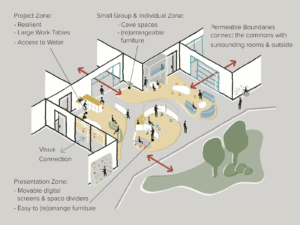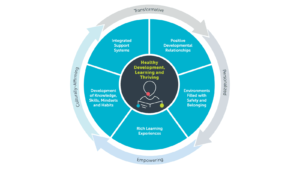4 Essential Attributes of Personalized Learning

iNACOL wrapped their tenth annual conference this week in Orlando. What used to be the Virtual School Symposium is now the Blended and Online Learning Symposium this week in Orlando. And blended it was, as we outlined in our summary, the majority of the 275 breakout sessions dealt with technology enhanced learning at school. I participated in several sessions that reviewed the updated Blended Learning Implementation Guide.
Like corporate and military training most K-12 and higher education will soon be blended. I even saw an app for blended bible studies last week. But blended isn’t the goal, it’s just a better way to personalize learning.
Competency-based learning. A foundation paper on competency-based learning I reviewed over the weekend did a great job of enumerating the wide range of issues of moving from a system based on time to one based on learning. In Considering Competency-Based Education I said, “It will probably take us a generation to fully embrace high common expectation, blended formats, and show what you know policies and practices.”
Last week, Chris Sturgis reported Takeaways from EAA School Visits, “It was great seeing a highly developed competency-based model that was using blended learning extensively. The more time I spend around schools doing blended learning and competency-based learning, the more I’m thinking that to get to competency we have to figure out how to offer much more vivid deeper learning experiences.” I share Chris’ enthusiasm for blended learning that incorporates projects.
The architectural shift competency-based environments where students progress based on demonstrated mastery isn’t really the goal, it’s just a better way to personalize learning.
Personalized learning. “In a personalized learning environment, students’ learning experiences – what they learn, and how, when, and where they learn it – are tailored to their individual developmental needs, skills, and interests,” said Scott Benson in a recent blog. “Although where, how, and when they learn might vary according to their needs, students also develop deep connections to each other and their teachers and other adults.”
Benson, who was recognized by iNACOL for his contributions to the field last week, outlined four essential attributes of a personalized learning model in this acceptance speech:
- Learner Profiles: Captures individual skills, gaps, strengths, weaknesses, interests and aspirations of each student.
- Personal Learning Paths: Each student has learning goals & objectives. Learning experiences are diverse and matched to the individual needs of students.
- Individual Mastery: Continually assesses student progress against clearly defined standards and goals. Students advance based on demonstrated mastery.
- Flexible Learning Environment: Multiple instructional delivery approaches that continuously optimize available resources in support of student learning.
That’s a pretty good list. Despite progress toward next-gen platforms, all four elements remain more aspirational than manageable for schools. Scott makes the case for continued public, private, and philanthropic investment in the toolset so that all students can soon benefit from personalized learning.
Tom is a director for iNACOL.








0 Comments
Leave a Comment
Your email address will not be published. All fields are required.